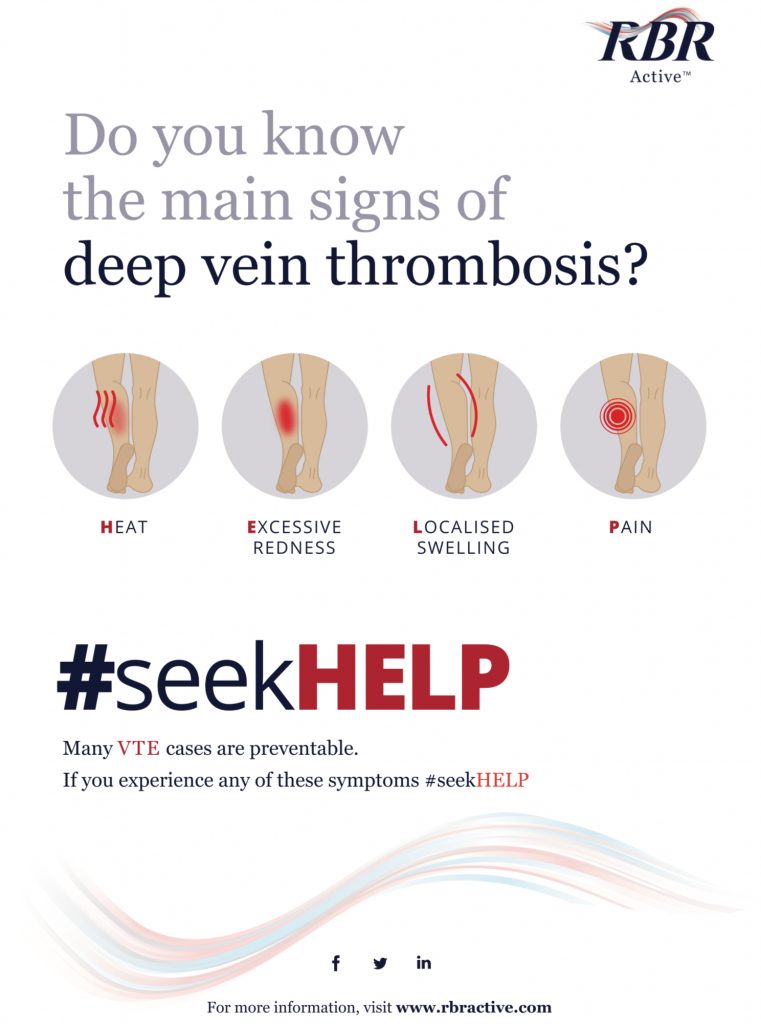The coronavirus outbreak is changing the way we all live our lives, this means thinking how to adapt to new situations, working practices and care for those we love.
Despite the impact of the virus, everyone at RBR Active™ are striving to provide continued support and information to all those affected by thrombosis and anyone who may be at risk.
Working with our medical team and following published advice from Public Health and NHS England, RBR Active™ are committed to providing information on reducing the threats of developing a deadly DVT, supporting well-being and sharing known and trusted information on thrombosis and COVID-19.
Please note, if you have any specific concerns or questions about your own health, please always speak directly with your healthcare provider.
Thrombosis and COVID-19, current information:
- Having blood clots, such as deep vein thrombosis (DVT) or pulmonary embolism (PE), is not associated with an increased risk of acquiring COVID-19
- Anticoagulants themselves don’t place patients at risk for COVID-19. What can be important are underlying disorders. For example, if anticoagulants are given to someone with a blood clot associated with active cancer; then the cancer and its treatment may result in immunosuppression, which places patients at risk. It’s always important to talk to your doctor about your individual situation if you are concerned
- D-dimer is a non-specific marker of inflammation or infection so it is not surprising that the levels will be high in those with the most severe Covid-19 infection. In some of the articles in the lay press, elevated D-dimer levels have been interpreted as indicating blood clots. This is an incorrect interpretation. Although D-dimer levels are elevated in most patients with blood clots, D-dimer levels also are elevated in many other disorders including infection. Therefore, an elevated D-dimer level in patients with COVID-19 infection alone is not evidence that they have a clot
For up to date medical guidance and information for the public, in the UK visit the NHS and the World Health Organisation (links below).
Reducing your risk of blood clots while working from home or self-isolating
Being aware of risk factors, and especially of your own risk factors is really important in helping you to avoid and protect yourself from thrombosis.
Although some risk factors including hospitalisation and major surgery, carry more risk, if you are at home and less active, this can also be a risk factor for deep vein thrombosis, for instance:
- Long-term bed rest
- Long periods of inactivity including sitting for long period of time
- Reduction in physical activity
- Increased isolation and decrease in motivation
Remember the 90 minute rule. Research undertaken by RBR Active™ Professor Richard Beasley, showed that if we’re sedentary for just 90 minutes, our blood flow has decreased by over 50%. This greatly increases the threat of developing a deadly blood clot.
